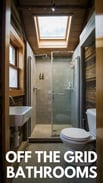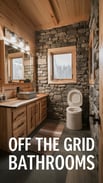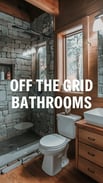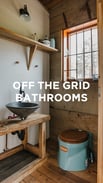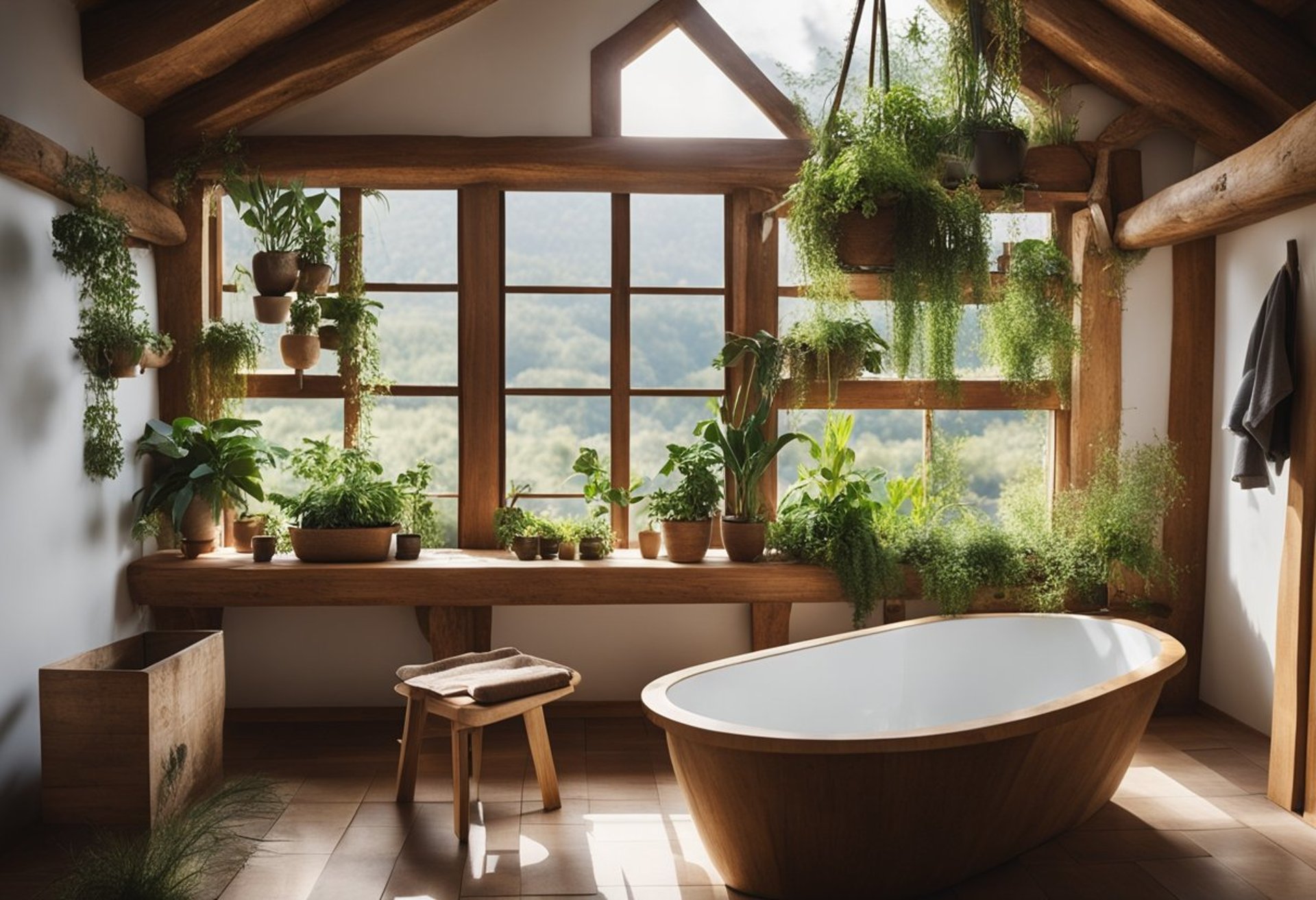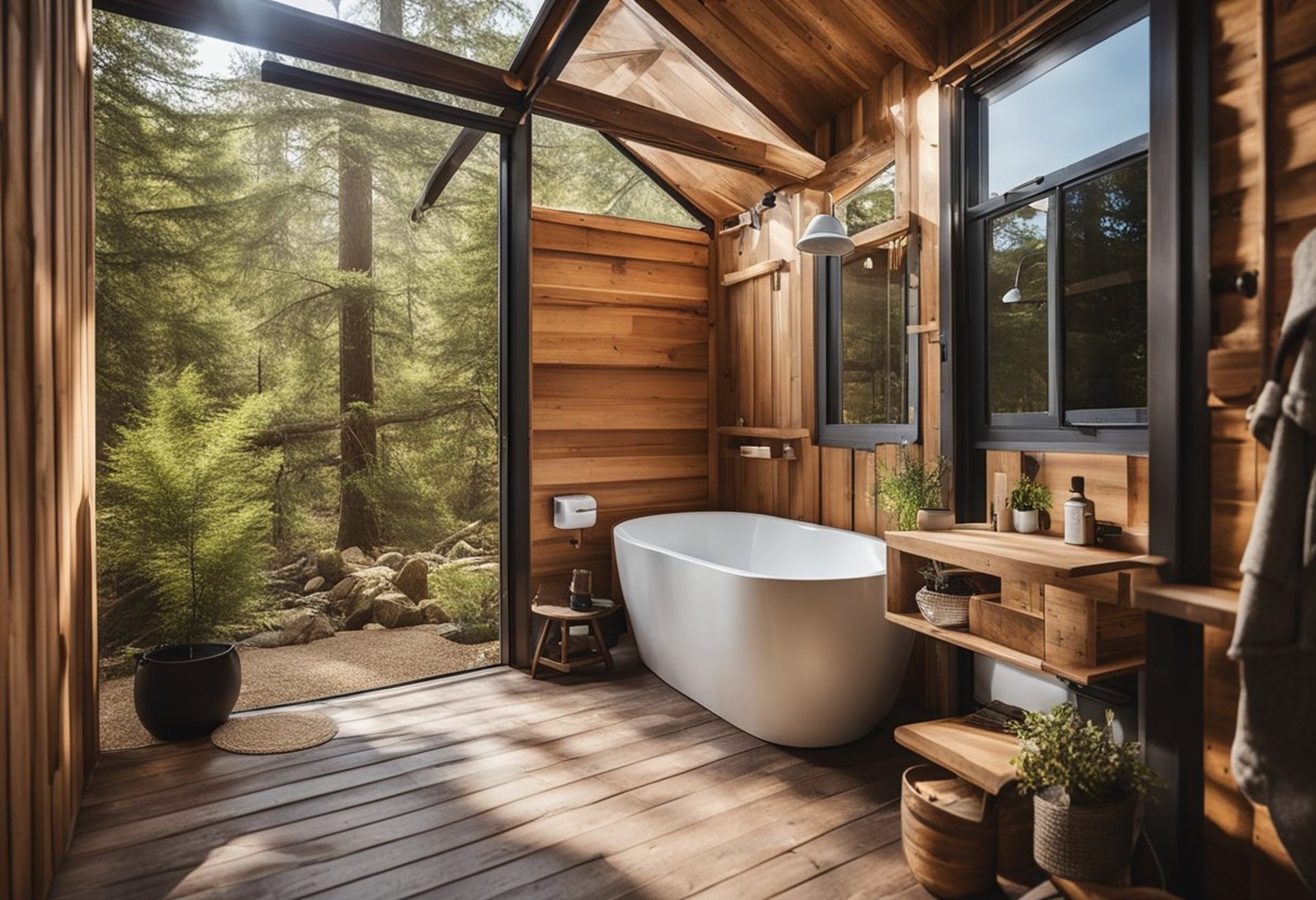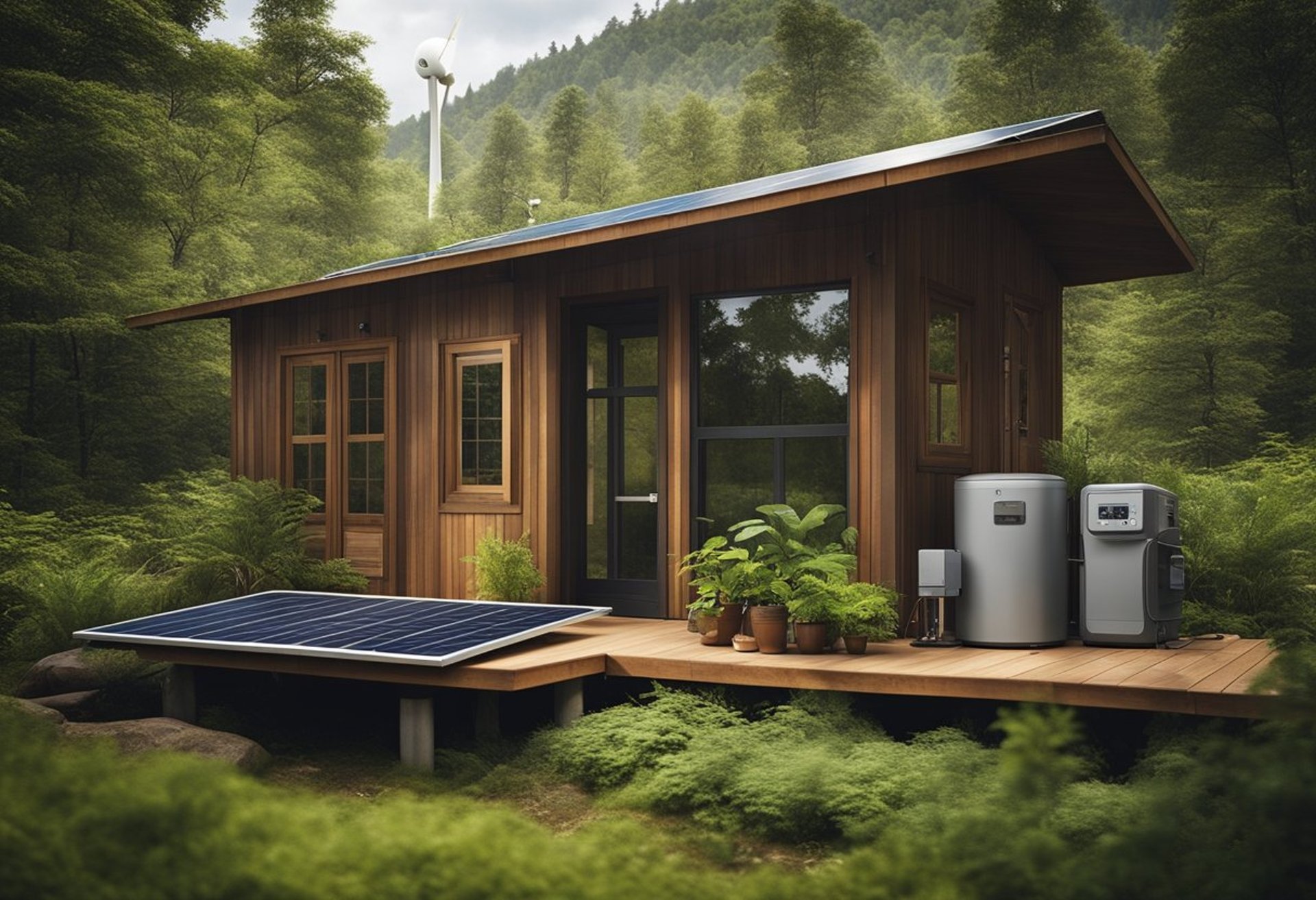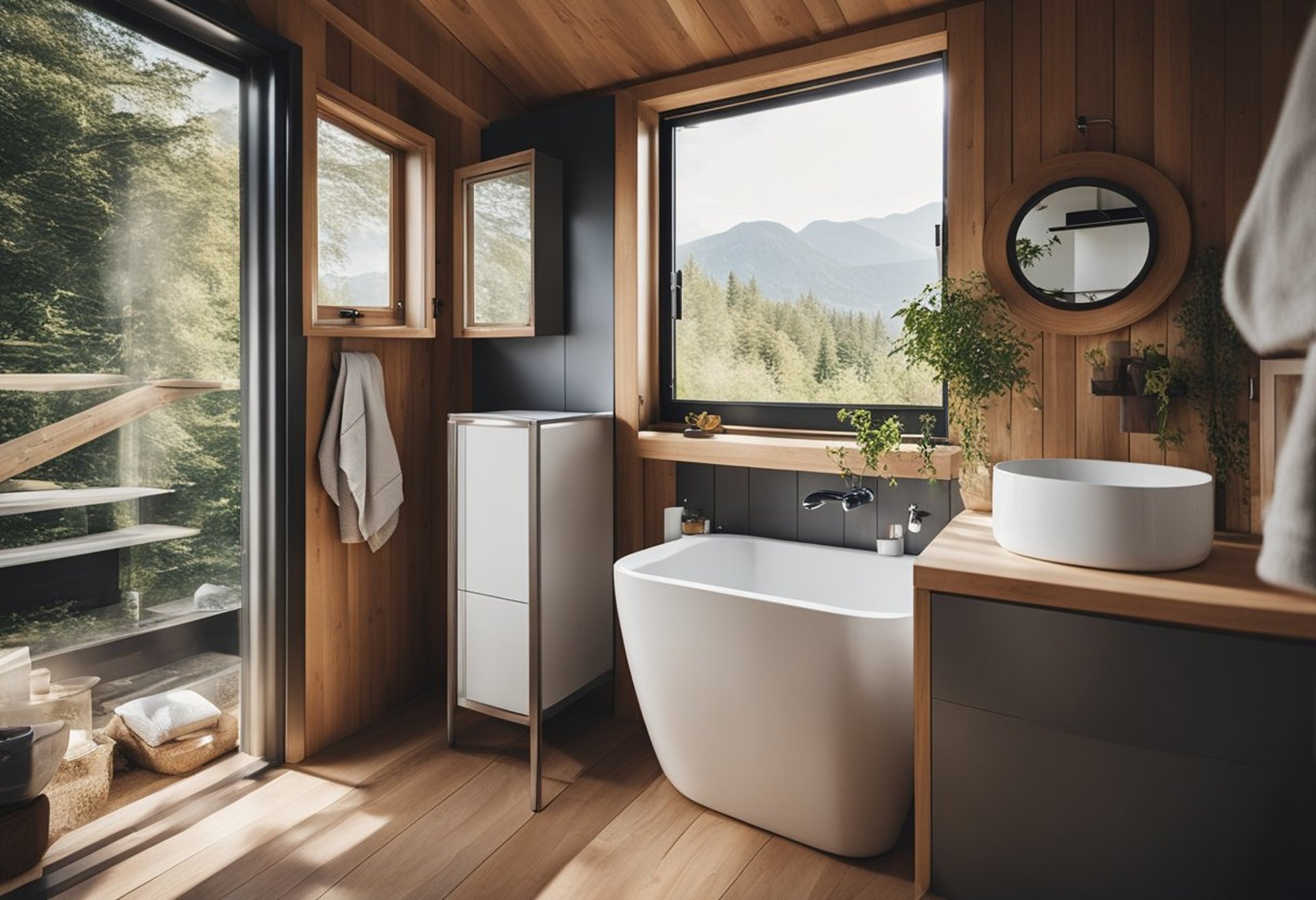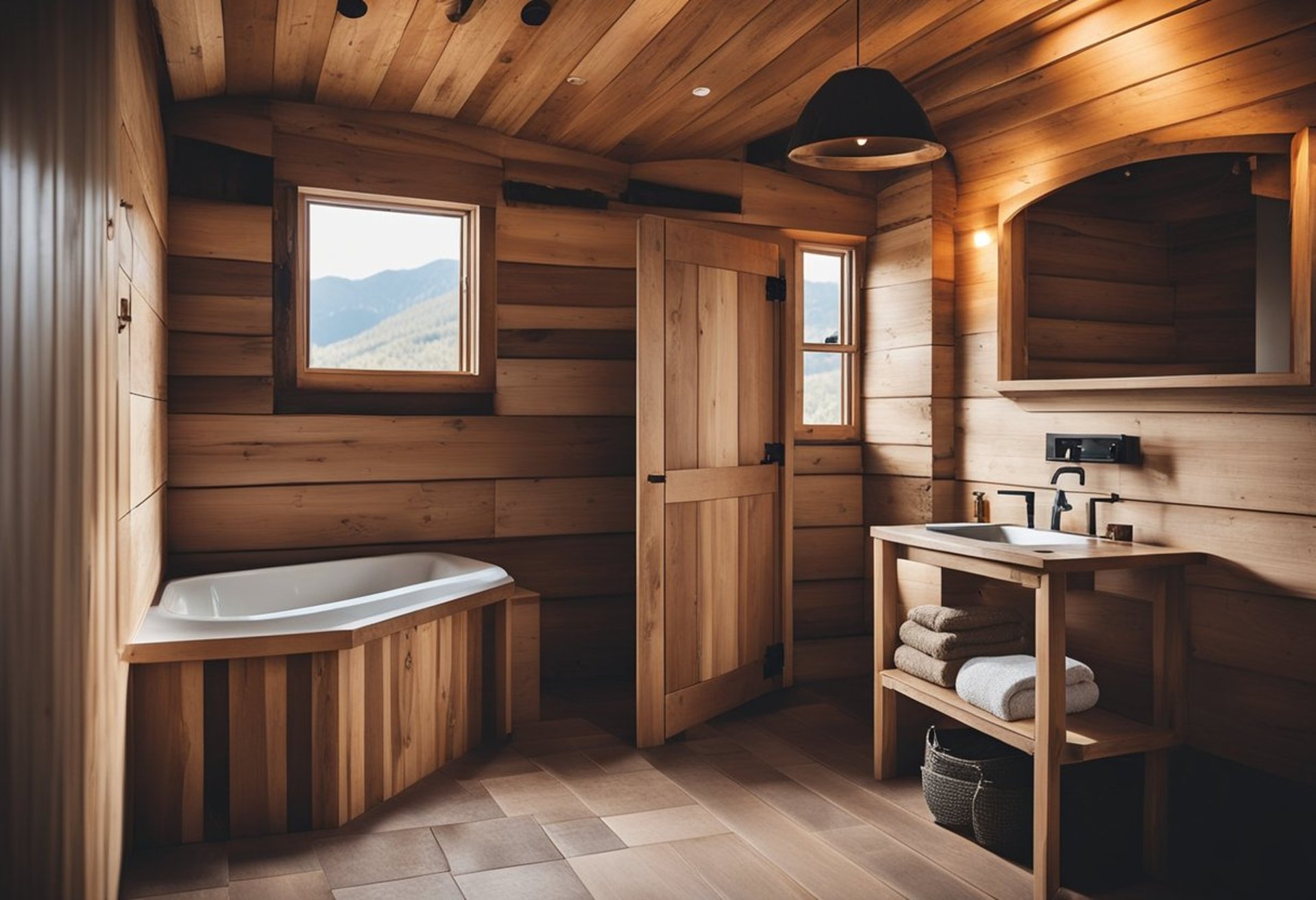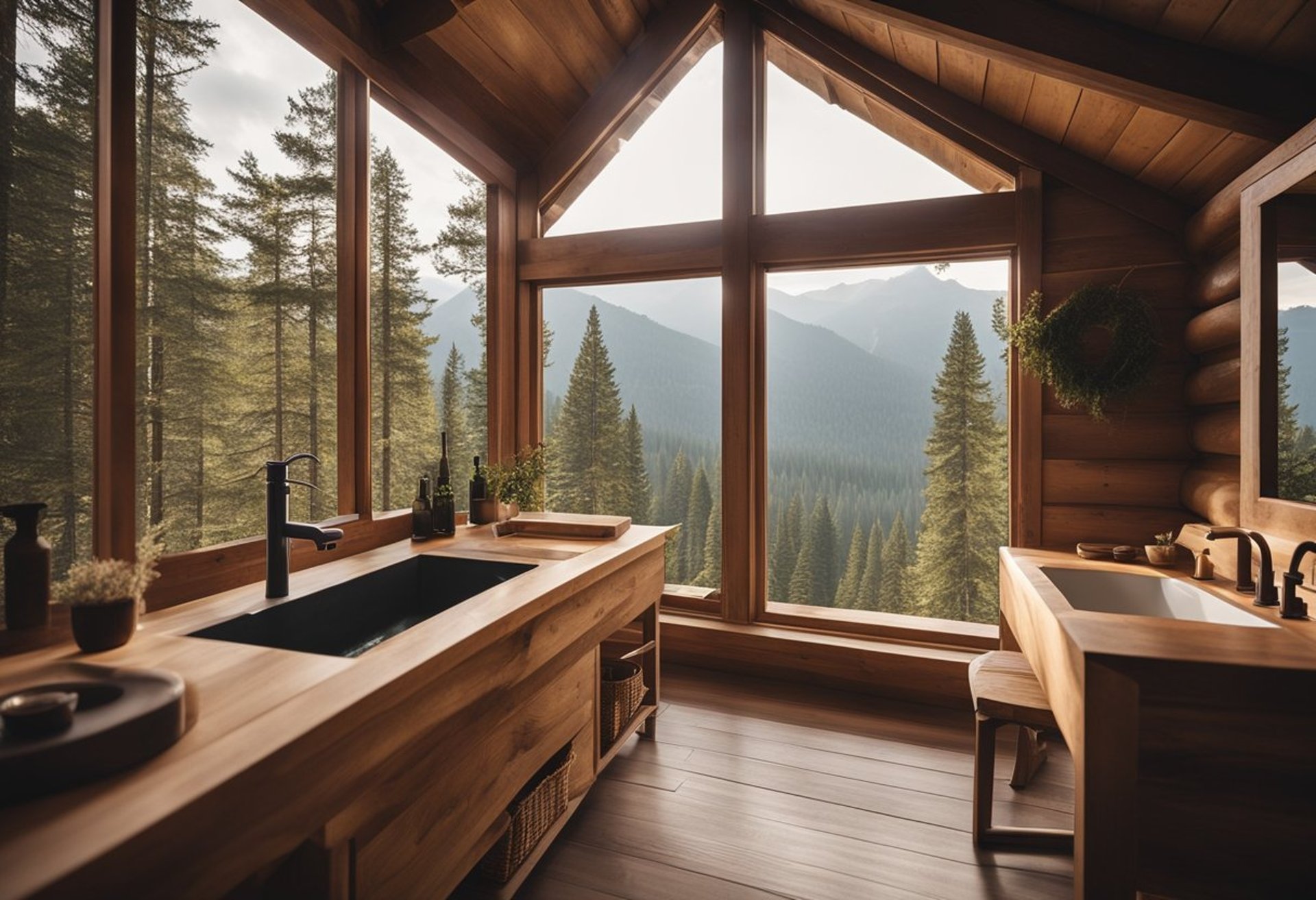Bathroom Design Ideas for Off Grid Cabins: Creating Functional and Aesthetic Spaces
The appeal of off-grid living includes the opportunity for innovation in design, especially when it comes to bathroom spaces in cabins. Creating a functional and aesthetically pleasing bathroom can enhance the overall experience of living off the grid. This blog post explores various design ideas that not only meet essential needs but also utilize sustainable practices and efficient layouts.
In an off-grid cabin, maximizing space while ensuring comfort is key. From clever storage solutions to eco-friendly materials, these bathroom designs provide options for those looking to create a unique retreat without relying on conventional plumbing and electricity. By embracing alternative energy sources and sustainable construction techniques, it’s possible to maintain both functionality and style.
Readers will find inspiration and practical tips for designing an off-grid bathroom that aligns with their values and lifestyle. This comprehensive guide aims to empower individuals to create a space that reflects their personality while being resourceful and environmentally conscious.
Key Takeaways
Effective layouts can significantly enhance bathroom functionality in off-grid cabins.
Sustainable materials contribute to a more eco-friendly living environment.
Integrating renewable energy sources ensures consistent service while embracing off-grid living.
Understanding Off-Grid Cabin Bathroom Requirements
Off-grid cabins present unique challenges when designing a bathroom. Key considerations include water source and management as well as waste disposal solutions. Proper planning in these areas contributes significantly to comfort and sustainability.
Water Source and Management
Access to water is crucial for an off-grid bathroom. Options may include rainwater collection systems, nearby streams, or drilled wells. Each source requires careful planning for storage and access.
Rainwater Collection: This system involves gathering rainwater from roofs and directing it to storage tanks. Filters can be employed to ensure water quality.
Water Management Systems: He/She should consider basic plumbing for sinks and toilets, ensuring compatibility with the chosen water source. A portable water tank may also be an option for temporary setups. Simple pumps, whether manual or solar-powered, facilitate water flow.
Waste Disposal Solutions
Handling waste in an eco-friendly manner is essential in off-grid designs. Solutions can range from traditional outhouses to innovative composting toilets.
Composting Toilets: These systems break down waste utilizing natural processes. They require minimal water and can be maintained easily.
Outhouses: A popular choice for remote cabins, they need careful placement away from water sources to ensure sanitation. Basic building materials, such as treated wood and proper ventilation, are necessary for durability.
The chosen waste disposal solution should reflect individual needs and environmental considerations. Each approach contributes to the off-grid lifestyle's sustainability and comfort.
Maximizing Space with Efficient Layouts
Creating an efficient layout in off-grid cabin bathrooms is essential for maximizing limited space. Strategic selections of fixtures and design elements can enhance functionality without sacrificing style.
Compact Fixtures
Choosing compact fixtures is a critical component of space optimization. Smaller sinks, toilets, and showers can significantly reduce the footprint of a bathroom.
Types of Compact Fixtures:
Wall-mounted sinks: Free up floor space and offer a modern look.
Tiny toilets: Consider options designed for small spaces, like those found in RVs.
Corner showers: Utilize often-overlooked corners to create a more open feel.
In addition to their small size, these fixtures may also come with water-efficient features, aligning well with off-grid living principles. This combination of compactness and efficiency allows for a functional bathroom that does not feel cramped.
Multi-functional Design Elements
Incorporating multi-functional design elements further optimizes space. These features allow for multiple uses in a single area or item.
Ideas for Multi-functional Design:
Storage solutions: Use vanities that double as storage to decrease clutter.
Fold-down features: Consider foldable countertops or tables for added functionality.
Built-in shelving: Maximize vertical space with shelves that can also serve as decorative elements.
By integrating these versatile designs, the bathroom becomes not only more practical but also a stylish retreat. Such elements will make the best use of available space while providing essential functionalities for off-grid living.
Sustainable Materials and Construction Techniques
Choosing the right materials and employing effective construction methods is essential for building an off-grid bathroom. Sustainable practices not only reduce environmental impact but also enhance the durability of the structure.
Eco-Friendly Building Materials
Sustainable building materials significantly contribute to an off-grid bathroom’s environmental footprint. Consider using reclaimed wood, which minimizes deforestation and adds character to the design. Bamboo is another excellent choice; it grows rapidly and is incredibly durable.
Recycled materials, such as glass and metal, can be utilized for countertops, fixtures, and decor. For insulation, sheep's wool, hemp, or cellulose made from recycled paper provide excellent thermal properties while being biodegradable.
Utilizing low-VOC paints and finishes ensures that harmful chemicals do not pollute the air within the cabin. These choices promote a healthier indoor environment and align with eco-conscious building standards.
Energy-Efficient Design Considerations
Implementing energy-efficient design plays a crucial role in the functionality of an off-grid bathroom. Orientation and natural light are key factors; positioning windows to maximize sunlight can reduce the need for artificial lighting.
Installing solar panels to power lighting and ventilation systems can significantly decrease reliance on fossil fuels. Incorporating composting toilets not only conserves water but also minimizes waste, turning it into a valuable resource.
Natural ventilation strategies, such as strategically placed openings, can contribute to maintaining a comfortable temperature. This approach reduces energy consumption and creates a more pleasant atmosphere.
Prioritizing sustainability in both materials and design encourages a self-sufficient lifestyle. With thoughtful planning, off-grid cabins can be functional, eco-friendly, and aesthetically pleasing.
Styling Your Off-Grid Bathroom
Creating a stylish off-grid bathroom combines natural elements with practical design. Thoughtful choices in materials and clever storage can transform a basic space into an inviting retreat.
Natural Aesthetics
Natural aesthetics play a crucial role in off-grid bathroom design. Incorporating materials like reclaimed wood, bamboo, or stone promotes a seamless relationship with nature.
Earthy color palettes, such as greens, browns, and tans, can create a soothing environment. Using natural light through strategically placed windows enhances this effect.
Adding elements like plants or pebble accents can further strengthen this aesthetic. Minimalistic, sustainable fixtures such as low-flow faucets and eco-friendly toilets align with the principles of off-grid living while maintaining style.
Creative Storage Solutions
In off-grid cabins, maximizing storage is essential due to often limited space. Utilizing vertical storage techniques can help keep surfaces clutter-free.
Wall-mounted shelves or hooks can store towels and toiletries efficiently. Under-sink cabinets can house necessary items while maintaining a clean design.
Consider multi-functional furniture, such as benches that open for storage. Innovative ideas like repurposing wooden crates or baskets can add character while providing practical space for organizing essentials.
By blending functionality with creativity, an off-grid bathroom can become both beautiful and efficient, ensuring all items are conveniently at hand.
Integrating Alternative Energy Sources
In off-grid cabin design, utilizing alternative energy sources for bathroom facilities plays a crucial role in sustainability. Effective applications can minimize reliance on traditional power and enhance overall efficiency.
Solar Power Applications
Solar power is a leading choice for off-grid cabins. Photovoltaic panels can provide electricity for lighting, ventilation fans, and water pumps.
Key components include:
Solar Panels: These are installed on the roof or nearby structures to capture sunlight.
Battery Storage: A robust battery system stores excess energy for night use or cloudy days.
Inverters: This equipment converts solar energy into usable electricity for appliances and lighting.
By integrating these components, cabin owners can maintain a functional bathroom without connection to the grid. Proper sizing of the solar system ensures consistent energy supply, accommodating varying seasons and usage requirements.
Alternative Hot Water Systems
Hot water is essential for hygiene, and off-grid cabins can use various alternative systems to heat it effectively.
Some common methods include:
Solar Water Heaters: These systems capture sunlight to heat water directly, often using tanks that store hot water for later use.
Propane Water Heaters: Compact and efficient, propane heaters can rapidly provide hot water. They can be installed in small spaces and require a propane tank.
Wood-Fired Hot Water Systems: For those who prefer rustic solutions, wood-fired heaters can serve dual purposes, heating water and providing warmth to the cabin.
Implementing these options allows for a sustainable, off-grid lifestyle while maintaining modern hygiene standards.
